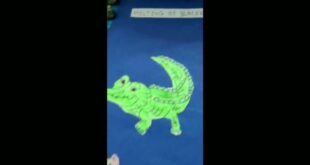[ad_1]
For those fortunate enough to have some outdoor space, gardening has become a top pandemic activity. It gets people outdoors doing something constructive while maintaining social distancing. You might even grow something to eat. But as all eco-conscious people know, gardening requires water. Sometimes a lot of water.
Continue reading below
Our Featured Videos

For low-water gardening tips, we asked horticulturalist Guy Banner of Red Butte Garden in Salt Lake City for some tips. Banner worked as a field botanist for federal agencies like the U.S. Geological Service and the U.S. Forest Service in Oregon before going back home to Utah. He now co-owns Grand Prismatic Seed, which specializes in hardy organic seeds, and works as the assistant horticulturalist in Red Butte’s Water Conservation Garden. Red Butte is a gorgeous 100-acre botanical garden with display gardens, hiking trails, walking paths, talks, outdoor concerts, flower shows and lots of educational displays for home gardeners. It’s definitely worth a trip once we can leave our houses again.

Inhabitat: Could you tell us a little bit about the history and inspiration behind Red Butte’s Water Conservation Garden?
Banner: The Water Conservation Garden (WCG) had been a long-term goal for the garden as a response to our arid climate and regional projected population growth as well as an opportunity to create a garden space with a different feel and plant palette. Ten years of planning and preparation came before the grand opening in the spring of 2017. The hope was to create a water conservation garden that demonstrated low to no water use through design, plant selection and gardening techniques without sacrificing high aesthetic value. I believe it has been a success. The WCG hosts plants from similar climates across the globe but there is a special emphasis on housing many examples of the beautiful and well-adapted native flora of the western U.S.
Inhabitat: Any tips for people planning a low-water garden at home?
Banner: There are many lovely dry shade plants, but the majority of the most colorful and structural low-water plants need full sun and warmth. They are great for sunny south and west facing garden beds. Rocks, slopes, windbreaks, evergreens and structures can be used to create warmer sheltered spaces for more cold-sensitive plants.
Low-water plants tend to need good drainage in the soil, especially in non-arid climates. You can find out your soil’s drainage by doing a simple DIY soil percolation test, like this one from Tennessee State University Cooperative Extension: Soil Perc. Test.
To improve drainage, plant on a slope, use rock, gravel, sharp sand and coarse organic material to amend heavy clay soils and/or use plants adapted to those conditions. You can also build mounded beds with large rocks, cobble, cinder blocks, etc. inside to give height and good drainage.

If you are lucky enough to have a naturally moist and/or cool garden site, ‘low-water’ plants for you can have higher water needs.
Draw inspiration from your native upland flora. Those plants will indicate plant types that can thrive in your area without extra water.
Newly planted and transplanted plants will have to be watered regularly until their roots can establish. Establishment can take between one and three years, depending on how slow-growing the plant is. Only the most low-water plants can establish with little to no water after initial planting. Rainfall should be considered.
Plants that grow from seed or seedlings in your beds will create the best root systems most quickly, because the roots are free to grow to their fullest potential while seeking out the nutrients and moisture in your garden soil.
Mulch is a great way to improve soil texture, moderate temperature, reduce weeds and retain moisture. Use well-draining inorganic rock or gravel mulches around very xeric plants that are prone to rot if their stems and crowns are surrounded by excess moisture.
The spongy organic material, beneficial bacteria and fungi of healthy living soils help plants to better utilize available water and nutrients. The natural symbiosis of roots with beneficial fungi (mycorrhiza) in upwards of 90% of studied plant families help plant roots access much more of the soil’s water and nutrients than they can on their own. To improve sterile and impoverished soils use healthy compost or beneficial soil life inoculants. Be minimal and cautious with pesticides, toxic materials and repeated heavy tillage.
Visit and support your local nurseries, botanical gardens, university extension programs and gardening clubs. They can be excellent resources.
Inhabitat: What are the biggest water-related mistakes people make when planting a garden?
Banner: One of the biggest mistakes in low-water gardening is to mix plants with high and low water needs in the same irrigation zones. This creates a lot of hand watering or drowned low-water plants. The key is to create ‘hydrozones’ of plants with similar water needs that receive the same irrigation.
Another water-related mistake is to not maximize the water that naturally falls on your garden area. Unless you live in a heavy rainfall area, slow, spread and sink the water you receive by integrating passive rainwater harvesting into your landscaping. It can be particularly useful to integrate your rain gutter downspouts, create swales and basins and then hydrozone the plantings based on how much water is retained. Be mindful of rainfall patterns, leaks and potential flooding in your designs.

Inhabitat: What have you learned from working at the Water Conservation Garden?
Banner: It’s always teaching me new things of course but here are some of the most poignant lessons that I have learned.
The amount of water used to establish many of our garden’s low-water plants is more than some of the most xeric or sandy soil adapted plants can handle; they establish better now with the lower water scheduling.
The natural slopes of our foothill garden have helped significantly with drainage of our rocky, clay soils.
The use of native annuals and summer drought-adapted bulbs in the garden can create a wonderfully lush landscape by taking advantage of natural seasonal moisture.
People are very excited and often surprised to see the wide range of possibilities in low water gardening that we display, and it inspires me to continue to make the garden botanically interesting, aesthetic and approachable.
Inhabitat: Can you recommend some low-water plants?
Banner: My current favorite low-water plants are Northern Blazing Star (Liatris scariosa var. nieuwlandii), Shasta Sulphur Buckwheat (Eriogonum umbellatum var. polyanthum), Long trunked Spanish Dagger (Yucca gloriosa), Palmer’s penstemon (Penstemon palmeri), Smoothstem blazingstar (Mentzelia laevicaulis), Pale stonecrop (Sedum sediforme), Silverleaf Oak (Quercus hypoleucoides), Yellowhorn (Xanthoceras sorbifolium), Texas beargrass (Nolina texana), Arizona fescue (Festuca arizonica), New Mexico Agave (Agave parryii var. neomexicana), ‘Frazier Park’ Big Berry Manzanita (Arctostaphylos glauca ‘Frazier Park’), Canyon Liveforever (Dudleya cymosa), Saint John’s Chamomile (Anthemis sancti-johannis)

Inhabitat: Anything else our readers should know about water conservation and gardening?
Banner: There is a lot to explore in finding the best water-conserving garden for your unique situation. While there are many general guidelines and recommendations you will find special opportunities as you dig deeper in your gardening practice (pun intended). Don’t be afraid to experiment and make some mistakes. Have fun with it!
For more information on what to plant for your climate zone, check out this EPA site.
+ Guy Banner, Red Butte Garden
Images via Teresa Bergen
 Pollution Climate Change Holocene Deforestation Population Acidification Y Not Freakin' Recyclable
Pollution Climate Change Holocene Deforestation Population Acidification Y Not Freakin' Recyclable



